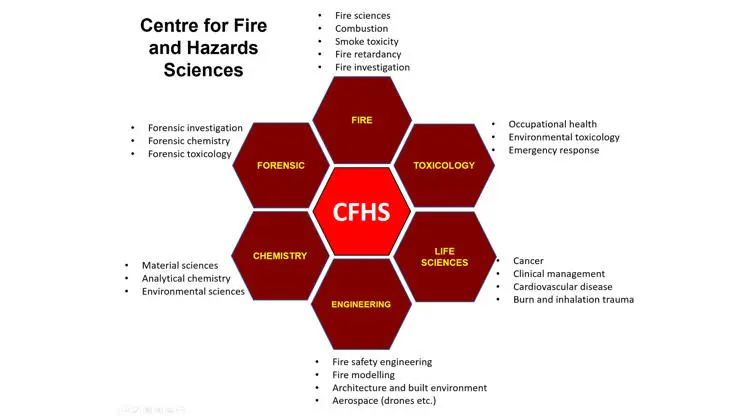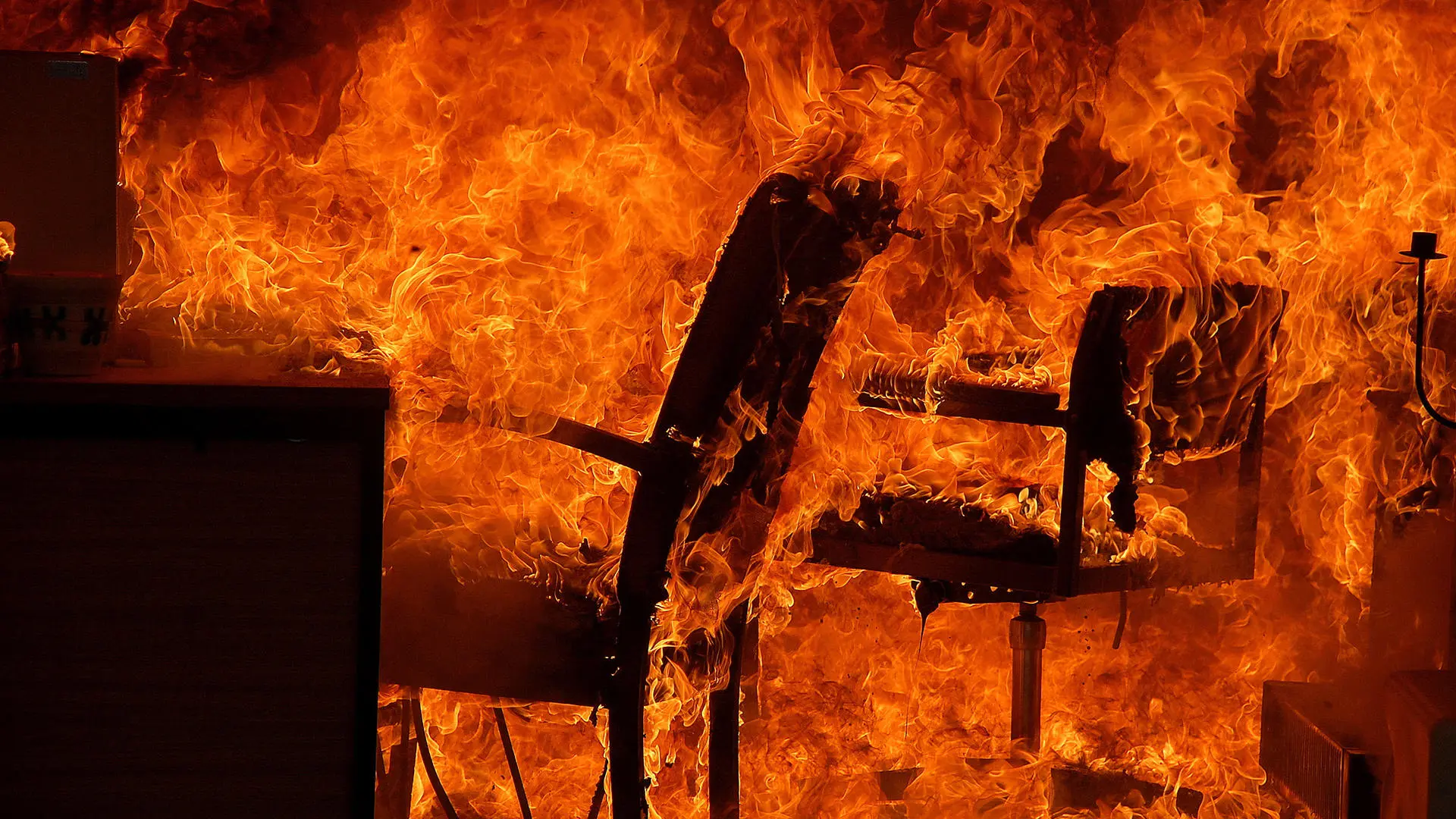Areas our expertise cover:
- Hazards from fire effluents and residues: Analysis of fire effluents and residues consistently shows modern fires to be more toxic than currently assumed. We have identified large quantities of several carcinogens in fire residues.
- Fire toxicity: Fire effluents testing, measurement and their impact on a human and environment.
- Fire chemistry: Understanding the mechanisms of decomposition and burning of materials.
- Fire retardancy: Studying of flame retardants and their interaction with the polymers on the flammability, and toxicity.
- Fire science: The study of the burning processes, achieved by isolating the individual steps of the overall combustion (including pyrolysis, product formation, oxidation reactions), and examining them in detail under carefully controlled laboratory conditions.
- Fire investigation: Analysis of fire-related incidents and determination of the cause of the fires.
- Fire testing: Analysis and interpretation of the results of small-scale tests and to make predictions about large and real scale fires.
- Development of experimental techniques: Using unique combinations of both fire, chemical and analytical measurements to maximise our understanding of the chemistry of fuel, combustion and toxic product generation processes.
The diagram below shows the Centre for Fire and Hazards Sciences, surrounded by 6 subject areas. These are fire, toxicology, life sciences, engineering, chemistry and forensic science. Each one can be broken into several areas. Fire involves fire sciences, combustion, smoke toxicity, fire retardancy, fire investigation and indoor air quality. Toxicology involves occupational and environmental toxicology as well as emergency response. Life Sciences include cancer, clinical management, cardiovascular disease, and burn and inhalation trauma. Engineering includes fire safety engineering, fire modelling, architecture and the built environment and aerospace (through the use of drones etc.) Chemistry includes material sciences, analytical chemistry and environmental sciences. Forensic includes forensic investigation, forensic chemistry and forensic toxicology. The diagram shows how each of these provide input into the Centre for Fire and Hazards Science.


